The participation rate is a measure of the active portion of an economy's labor force. It is defined as the number of people who are either employed or actively looking for work. People who are no longer searching for work are not included in the participation rate. During a recession, many workers get discouraged and stop looking for jobs; as a result, the participation rate falls.
Now let’s look at some charts from the FRED database of the St. Louis Fed. For those not familiar with it, FRED is one of the finest databases of all things economic in the world. I am constantly amazed at the breadth and depth and range of data that you can find for free in FRED. I’m not sure just how the St. Louis Fed came to be the main repository of historical economic data, but I am grateful.
Let’s look first at the actual Civilian Labor Force Participation Rate for the United States. This rate has been falling since 2000. A big part of the dropoff reflects Boomers retiring, but since the Great Recession a significantly steeper decline has resulted as many people failed to find jobs, went back to school, or became discouraged and stopped looking for work. In theory, that means there are now a lot of people on the sidelines who are not counted as unemployed but who could be available if job opportunities materialized. So if the economy started to grow faster and those currently sidelined people once again found jobs, the number of workers would increase, and GDP would get an additional boost.
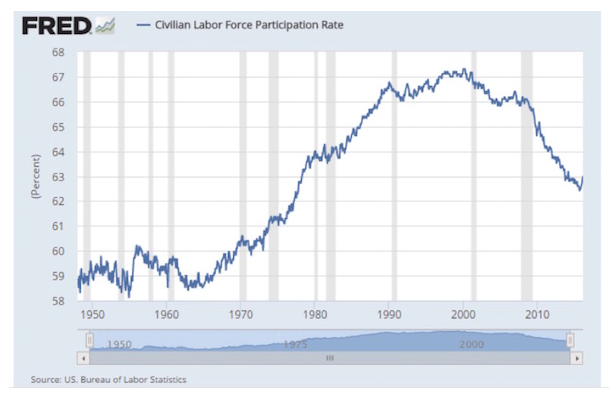
This next chart shows the participation rate for just men. It might seem a little strange that the participation rate for men has been dropping since 1950. Again, part of that falloff is the ever-growing number of retirees, but other factors are in play as well. Even with population growth, a declining participation rate this significant should have dramatically reduced GDP growth since 1950. But GDP growth between 1950 and 2000 was pretty robust, so what happened?
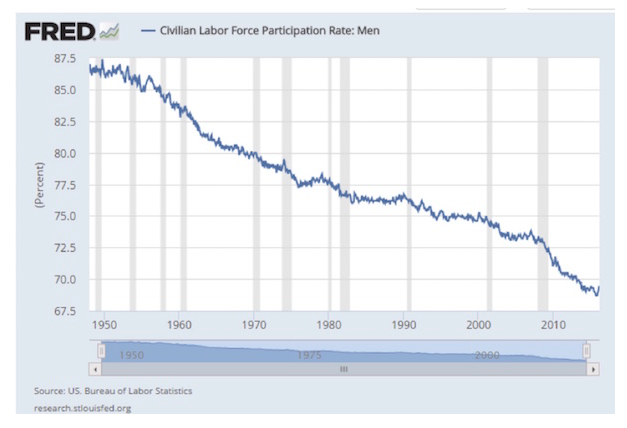
Well, this next chart happened. Women – half the population – doubled their participation rate from 1950 to 2000. In fact, they contributed 100% of the actual overall increase in the participation rate. Without their coming into the workforce, the United States would have fallen into a state of decline. However, since 2000 we have seen the participation rate of women go flat and then begin to fall after the Great Recession. Again, part of this dropoff is due to retirement, but there are other factors as well.
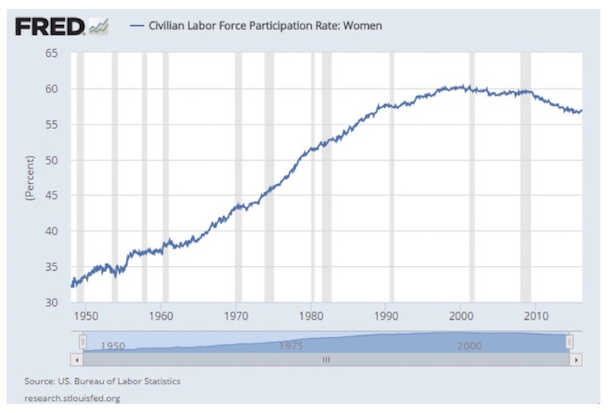
(Side note: Countries that don’t allow their women to participate in the economy to any significant extent are clearly inhibiting their nations’ growth. These countries usually lag the developed world in economic status, and their situation is only going to get worse until they adjust their social parameters. Just saying…)
Want to see the effect of retirement on the participation rate? Let’s look at the participation rate of people 55 and older. What we see is that it dropped from 1950 through the early 1990s but has risen since rather dramatically. As we saw last week, most people 65 and over who continue in the workforce are doing so not for economic reasons but because they simply don’t want to quit. This is a new social phenomenon all around the developed world. It is not just that lifespans are getting longer; healthspans are improving as well. Older people want to work longer, be a productive part of society, and contribute to the growth of the economy. That is a good thing.
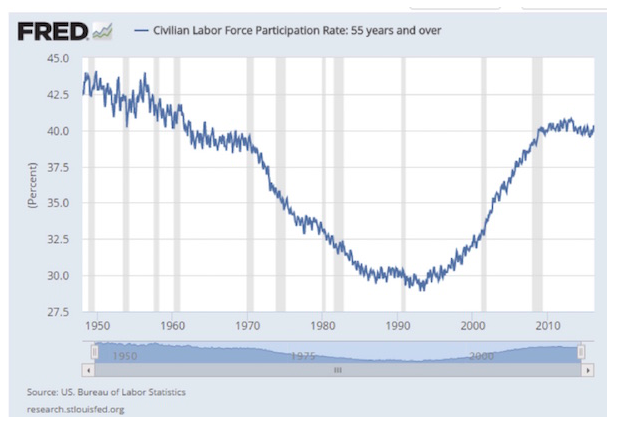
But there is another odd phenomenon going on. We are actually seeing a decline in the participation rate of 25 to 54 year-olds, people of prime working age. The labor participation rate for this group had risen continually for 50 years. There’s something going on here besides “retirement.”
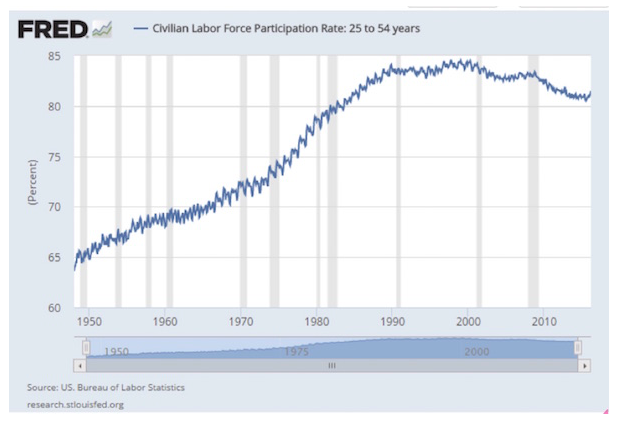
And now we delve into an even stranger phenomenon. Young people, 20 to 24, are increasingly opting out of the workforce. And this is not just a recent phenomenon. It has been happening since 2000, but the trend has dramatically accelerated in the wake of the Great Recession. Research tells us that a lot of those people are still going to school. But there are other things happening here, and we need to try to understand them.








